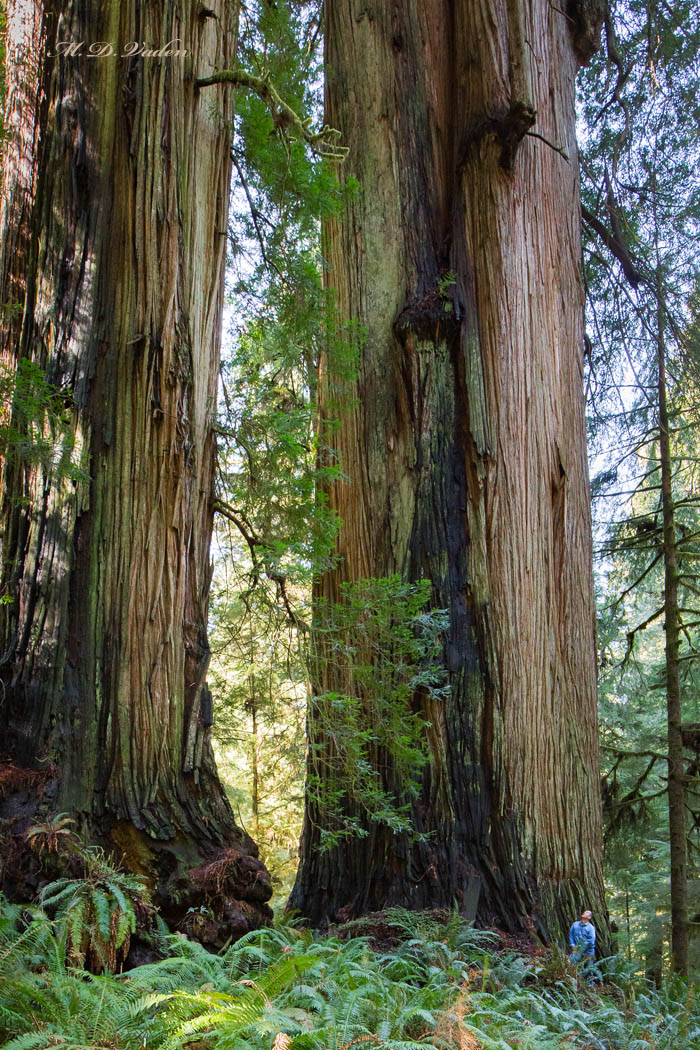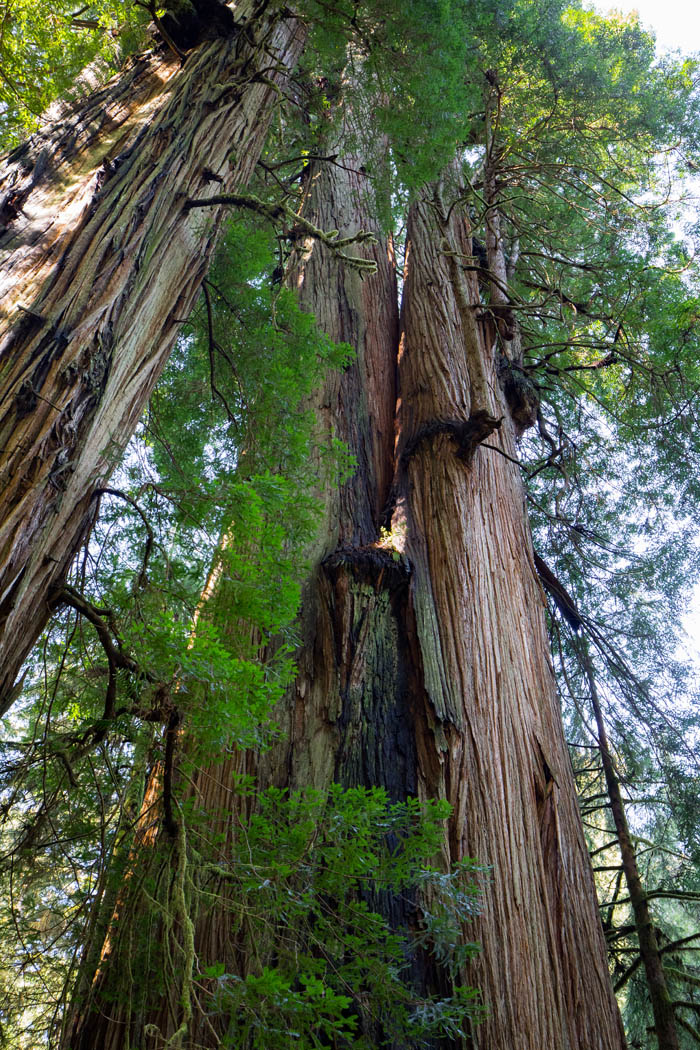
The wall
Largest double coast redwood
by Mario Vaden
This is the largest compound (fused / merged) coast redwood ... supposedly.
The redwood (s) below is similar to Screaming Titans of the Grove of Titans along Mill Creek trail. This redwood formation was discovered in 2014 by John Montague, a redwood enthusiast and a board member of Save the Redwoods League. Chris Atkins and I found this tree about 3 months later and shared photos online. John got possessive of his discovery and requested for us not to post photos. Oddly, a consequence of his insistence was that social media leaked the location and assigned the discovery to a fake person initially, then later to LIDAR. Dozens of people are posting photos now so I added this page to add accuracy and background.
Big tree hunters usually let discoverers select a nickname is they so desire. John loosely referred to this as THE WALL but didn't really name it. It was more of a description, not a nickname. Several big tree hunters assumed that John was a democrat because soon afterward in 2016 his Facebook page went hog-wild political. And a few republican big tree enthusiasts quietly joked suggesting TRUMP TOWER as a possible name. But no nickname got traction and the small network of big tree hunters adopted THE WALL as the one and only name.
Otherwise, this was not in any way found with LiDAR nor has any connection with Girl Scouts or a champion size hemlock found during a hail storm and named Hail Storm. It was found by John while exploring in Jedediah Smith park
Height 318 feet . . . Diameter 24.8 feet ... Volume 44,800 cu. ft.
Continue reading below this image ...

As noted, this is a twin redwood like Screaming Titans. The seam of included bark runs almost all the way from the base and the two boles clearly part about 50 feet above the ground with an air gap between. Viewed from the opposite side, it's easy to see that there's a small third trunk, but for form it's mostly a twin. If this is treated as if it's one tree then it's tied with The President Sequoiadendron for 3rd largest tree in the world. Their volumes are like 300 cu. ft. apart, a margin so razor-thin that it's basically equal for something so large and irregularly shaped. There's no way to tell if there's a layer of included bark between the trunks all the way through or whether there's some innosculation of tissue.
I think THE WALL could be compared fairly with the largest Sequoidendron trees though. The reason being, the world's so-called largest tree General Sherman (52,500 cubic feet) appears to be two trees fused / merged together. Which may explain the big volume gap beyond it (them) and the 2nd largest Sequoidendron, General Grant (46,600 cubic feet). The evidence becomes clear standing back a ways from General Sherman. Most of us are aware of the saying "if it walks like a duck and talks like a duck, then it probably is a duck". Sherman can't be DNA sampled to prove it's from one Sequoiadendron, and there's formations on the trunk characteristic of double trunks. I wrote a full post related to this, called Seen a Tree? Let's Think About That!. When you have moment, read that post and photos ... it explains in detail. General Sherman is mentioned further into that post.
I don't post locations to many of these trees. But will note that it's in Jedediah Smith park at the Boy Scout Tree trail side of the park. To see redwoods this big is much more practical at the Mill Creek boardwalk area through the Grove of Titans.
In the photo above, Thomas Hahn from Germany is at the base to provide a comparison for size. The photo below is to show how obvious the twin trunks are. Whereas Screaming Titans trunks completely part about 35 feet above the ground, these part somewhere around 50 to 60 feet. This is why the Big Kahuna remains the largest single trunk coast redwood discovered in recent history.
I wrote that THE WALL is supposedly the largest double bole. That's because Screaming Titans hasn't been measured for the same kind of size comparison, nor a couple of other multi-bole giants in Jedediah Smith or Prairie Creek parks. So there may be a larger compound redwood "tree" in these parks.
